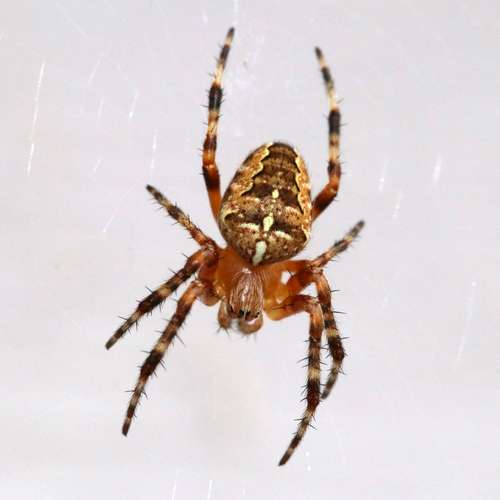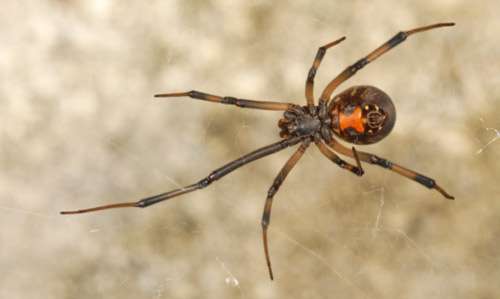
The family Sparassida of huntsman spiders includes Micrommata virescens, also known as the “green huntsman spider.”
Description
Micrommata virescens has a body length range of 7 to 10 millimeters in males and 12 to 16 millimeters (0.47 to 0.63 in) in females (0.28 – 0.39 in). The bright green cephalothorax and lengthy legs of the females are contrasted with a deeper green median stripe on the lighter green abdomen. White hairs encircle the eight eyes, which are grouped in two rows. Males are dark green-olive with a thinner abdomen, red sides, and a median stripe that ranges from red to red-brown and is bordered by yellow. Young spiders have a cephalothorax that is yellow-brown in color with dark median and marginal bands. The youngsters don’t take on the usual colors of the adults until the last molting in the spring after that. The bilin micromatabilin and its conjugates in the haemolymph, interstitial tissues, and the yolk of oocytes are responsible for the green color.
Habitat
These distinctive huntsman spiders can be found in moist woodland clearings, dry meadows, rides, and the borders of forests, where they favor the grass and lower branches of trees.

Geographic Distribution
In the southern half of Britain, M. virescens is common but dispersed, with few records in the north. It is lacking in a lot of places. Although rare, the species is prevalent across western and central Europe.
Biology
Most of these spiders are nocturnal. They seek insects in green vegetation, where they rely on their concealment, like many other spiders do. They are exceedingly tough for predators to find because of their green tint. They develop rather slowly, maturing around 18 months. From May until September, females are fertile. The males pass away a few days after mating. The females surround the egg-sac in a few leaves that have been stitched together in July. Feminine creatures watch over cocoons. About 40–50 juvenile spiders hatch from eggs after 4 weeks.
Diet
The huntsman consumes a range of arthropods, tiny lizards, frogs, and insects. The food item is held in place by the large, strong fangs until the spider’s venom paralyzes it. Humans can experience pain from bites, and they occasionally experience mild nausea and headaches, but most often, only localized pain and swelling are present.
Keeping as a Pet
It’s possible to keep huntsman spiders as pets. Thought must be taken to avoid provoking or threatening them. They may even be helpful in your home on that front since they prey on insects. Huntsman spiders raised as pets need to have access to cork, bark, pebbles, and vertical room to climb in their terrarium.
Table





